An interview with a man who was bad at saying no and whom others put more faith in than he did himself.
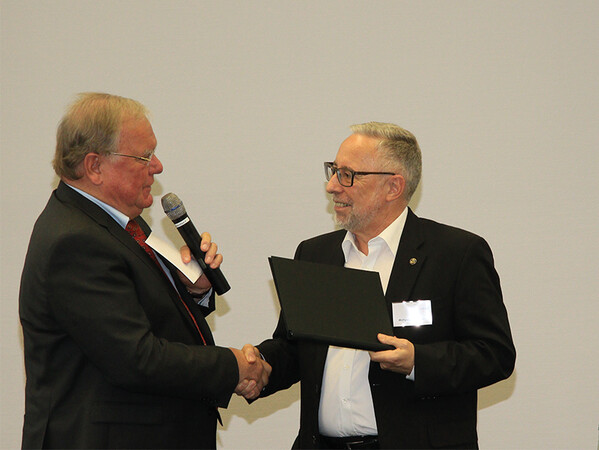 The Chairman of the VDMA Elevators and Escalators Association, Albert Schenk, bids farewell to Wolfgang Adldinger in 2018. Photo: © LIFTjournal / Ulrike Lotze
The Chairman of the VDMA Elevators and Escalators Association, Albert Schenk, bids farewell to Wolfgang Adldinger in 2018. Photo: © LIFTjournal / Ulrike LotzeThere were those in the sector who doubted whether you would actually manage to retire. Was this step really so difficult for you?
Adldinger: I kept putting off the decision, it really wasn’t easy. I had actually planned to take my farewell at the end of 2017 after 45 years of work. I think if it hadn’t been for my wife, I would not yet have taken this step – although the topic had haunted me ever since leaving Wittur seven years before. After leaving Wittur, I had of course begun to work for the VFA and set up my own company, simply because various companies had repeatedly approached me and asked if I could support them. When I then announced the final decision last year, the reactions were vehement but also differed greatly. Some couldn’t understand it while others endorsed my decision and told me I should enjoy life.
I also resigned from the VFA since if I had stayed in the association, members would have kept approaching me with their questions and problems. That was another step that was very difficult for me.
In the end, my own common sense and my wife’s arguments prevailed. You have to bear in mind: at Wittur and in part already at Kone, I worked 75-80 hours a week. I worked almost every week, almost every Saturday and also on many Sundays. I didn’t exactly take many days holiday for decades, simply because I saw it was necessary and I often couldn’t say no.
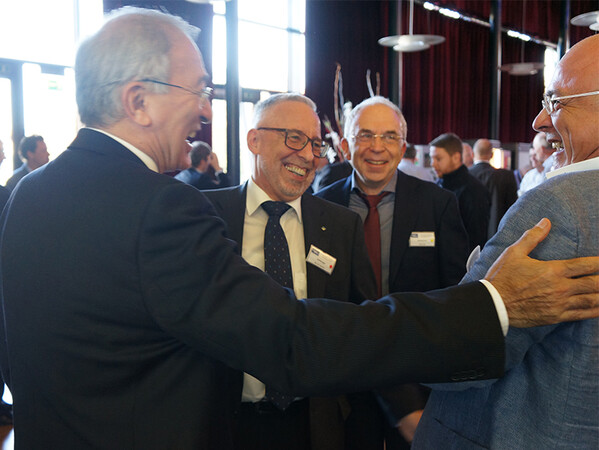 He was also very active at European level: Wolfgang Adldinger in conversation at ELCH 2018. Photo: © LIFTjournal / Ulrike Lotze
He was also very active at European level: Wolfgang Adldinger in conversation at ELCH 2018. Photo: © LIFTjournal / Ulrike LotzeWhat is the secret of your success?
Adldinger: I believe I learned lift construction from the ground up. In 1972, I qualified as draughtsman at MAN. From 1975 to 1978, MAN in part exempted me from work and I was able to attend design school. A good friend of mine was working for a lift builder at the time. They were looking for a group leader for mechanical drive technology. That was how I got into the lift sector. At the beginning of 1981, I then switched to the family company "Bauer Aufzug" in Augsburg as group leader for technical drive technology. Among other things, I worked there in assembly, service, modernisation and in the factory. At that time, Hermann Graber was the technical authorised signature of the company and Aufzug Bauer with its large workforce was a very big SME that was active domestically and abroad. Mr Graber took me under his wing and I learned lift building from him.
Kone bought Bauer in April 1985. Kone in Finland had gotten into contact with me because I was the specialist for drive technology. I was to develop the drive technology division at Kone in Germany, Austria and Switzerland and launch the worm gear from Finland here. I think part of my success was that others often put more faith in me than I did myself.
Together with two Finnish colleagues and a large worldwide team, I was responsible from 1988 to 1990 for developing a standard lift for the whole of Europe and launching it. This not only involved the product, but also the sales strategy, logistics, assembly, TÜV acceptance, start-up and subjects like marketing and cost planning/profit. As a result, my horizon for Europe particularly expanded and I got to know a lot of suppliers and products. From 1991 to mid-1994, I then worked on modernisation in Germany for Kone.
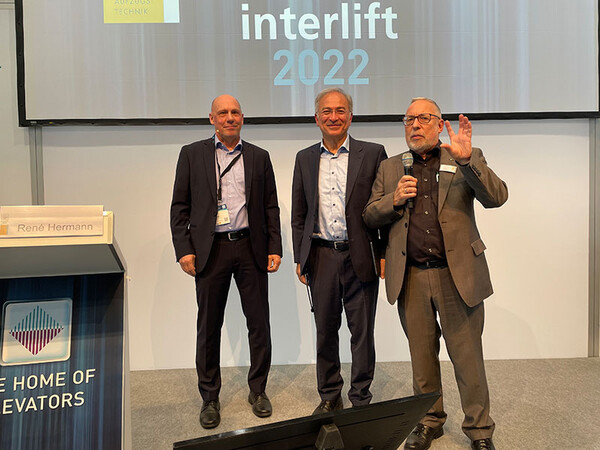 2022 as moderator of the VFA Forum – here with René Hermann (Schindler) and Esfandiar Gharibaan (Kone). Photo: © LIFTjournal / Ulrike Lotze
2022 as moderator of the VFA Forum – here with René Hermann (Schindler) and Esfandiar Gharibaan (Kone). Photo: © LIFTjournal / Ulrike LotzeWhen and how did Wittur then come into the picture?
Adldinger: I started at Wittur on 1 July 1994 and stayed there until the end of 2017. I would have probably stayed even longer if I could have reduced my working hours. At Wittur, I was initially responsible for the entire industrial sector with the departments development, design, work preparation, production and materials management. I devoted half of my working time there to this. The other 50 percent was to make WIttur a world brand in the component business. That was Horst Wittur's idea that had attracted me and was actually the reason for me switching from Kone to Wittur.
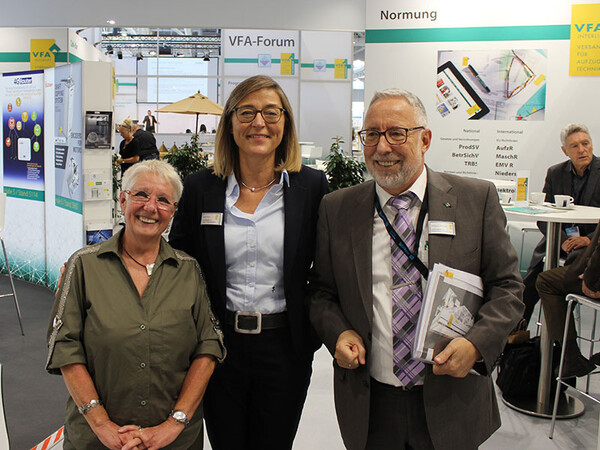 2019 with wife Hermine (left) and Nicole Heine (VFA). Photo: © LIFTjournal / Ulrike Lotze
2019 with wife Hermine (left) and Nicole Heine (VFA). Photo: © LIFTjournal / Ulrike LotzeWhat was your final role at Wittur?
Adldinger: At the end, I was the Technical Corporate Director Lift and Norms worldwide. In the years 2005 – 2006, I was on the brink of dismissal a few times, but I didn't care. When Wittur unfortunately encountered financial difficulties, I had to deal with representatives of liquidators, interim managers and financial investors. I was expected to tell them which employees I had to dismiss – I didn’t want to but I had no other choice. I had to dismiss 49 people in Germany out of 50. I think that cost me several years of my life.
I then rapidly climbed the career ladder at Wittur since I knew my way around a little everywhere. In addition, I had links to the big companies in the sector. I was familiar with the entire lift market and had always been interested in statistics, markets, technologies and trends. On top of this, Horst Wittur had to leave his company in 2006. The financial investors took over the company at that time. In the following years, there were repeated changes in ownership. But at some point, I realised that it's also very interesting to get to know the procedure of financial investors and what strategies they pursue. And at some point they noticed how wide my network was - worldwide, in big industry and in SMEs.
I engaged in standardisation work from the very beginning, even at Bauer Aufzug. This continued at Kone where I had to deal with the construction of a completely new lift for Europe with the new standards and norms. I always enjoyed this.
At Wittur, I encountered this worldwide theme around 2003 or 2004. In 2004, I became responsible for all TÜV matters as technical director. This work naturally had a great deal to do with norms and regulations, certifications, patents, brands and commercial products. At the beginning of 2001, through the German committee and Wittur, I joined the European lift associations EEA, ELA and via the ELA the CEN/TC10 and EU-NB-L.
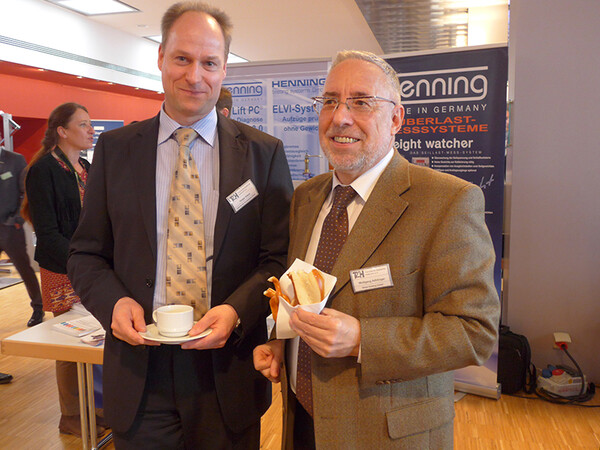 He was also a regular guest at the Heilbronn Aufzugstagen, here in 2017 with Holger Klaus von Kronenberg. Photo: © LIFTjournal / Bettina Heimsoeth
He was also a regular guest at the Heilbronn Aufzugstagen, here in 2017 with Holger Klaus von Kronenberg. Photo: © LIFTjournal / Bettina HeimsoethSince leaving Wittur, you have devoted yourself almost entirely in recent years to SMEs. Why?
Adldinger: My earlier work had already made me acquainted with the VFA chair, Achim Hütter, who was very intensively committed at the German and European levels, and who still does this with success today. He asked me whether I could imagine supporting the VFA in national and European lift associations and lift committees. This was the work I had done previously as the Wittur delegate. If you want to promote SMEs and the component industry, they have to be represented in the important committees of the CEN, ELA and NB-L. This is how you get information and can also have a say in decisions and organisation.
During my time at Wittur, I was not only in the VFA but also in the VDMA. I was in contact with the big lift builders via the VDMA and via the VFA with the small and medium-sized lift builders and component companies. Normally, I wouldn’t have wanted to do anything more from 2018. I had been working for so long! But then I was approached not only by Achim Hütter, but also by various SME companies from south Germany as well as from Europe, which I had known for decades. They asked whether I could support them. This then became known among the lift companies. Consequently, I founded "AD-LIFT service" and that’s how my work for SMEs got started, I wanted to support them.
Of course, this may have had something to do with my social concerns, but I’d also heard in strategy talks about what big industry was planning for the future and how it saw the role of the SMEs. SMEs are also bought up in other industries, but I would never have suspected that it would happen to such a huge extent.
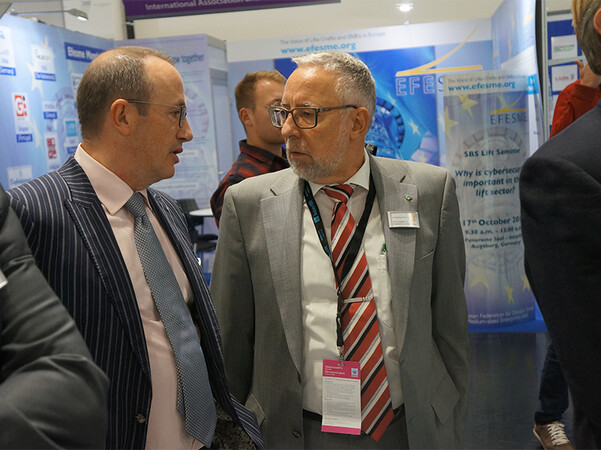 In conversation with VFA Chairman Achim Hütter at interlift 2019. Photo: © LIFTjournal / Ulrike Lotze
In conversation with VFA Chairman Achim Hütter at interlift 2019. Photo: © LIFTjournal / Ulrike LotzeWith regard to the future, where do you see the special challenges for SMEs?
Adldinger: There are three areas: standards & regulations, strategy and technical development – globalisation plays a major role here. There will continue to be SME companies and component manufacturers. Big industry will no longer confine itself to just lifts and escalators. It will increasingly get involved in building management. The conveyance systems form part of building management and looking at it strategically, involve the operation of the entire building – this includes access, heating, air conditioning and sanitation, for example.
It will become more difficult for various component suppliers and smaller lift builders to meet the many global and national normative requirements. If SMEs do not occupy themselves with this, they will fail to keep up with the new technologies; I need only mention digitalisation and artificial intelligence. I suspect very large SME lift builders will no longer exist in Germany in future, possibly just Schmitt + Sohn. I believe the successor generations, i.e. the children of the company founders, have grown up in prosperity. If they sell their lift companies, they can retain a certain living standard and therefore I foresee increasing numbers of SME lift companies selling their businesses. On the other hand, as a result of these company sales, small service, maintenance and modernisation companies can once again arise.
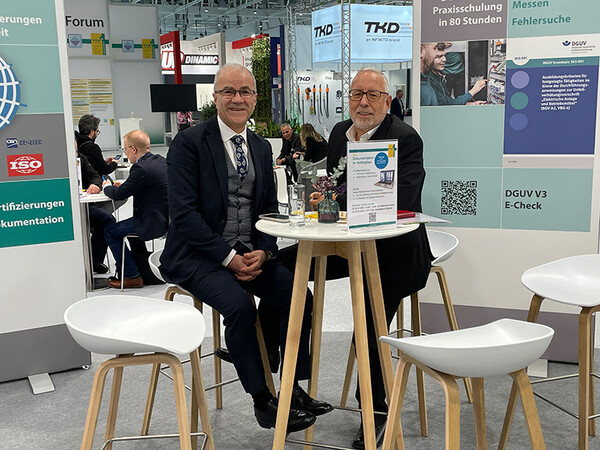 Wolfgang Adldinger at interlift: 2023 in conversation with Riza Latif (Fupalift). Photo: © LIFTjournal / Ulrike Lotze
Wolfgang Adldinger at interlift: 2023 in conversation with Riza Latif (Fupalift). Photo: © LIFTjournal / Ulrike LotzeThe legal subject of standards, regulations, guidelines, ordinances and legislation is also something to which SMEs and the component industry devote far too little attention, another being patents. For strategic reasons, big industry issues an enormous number of patents. From 2014 to 2021, the number of patent publications rose worldwide from 800 to 1600 annually – of these, 80 percent come from the big lift companies. These patented novel technological solutions often pose very great challenges to SMEs and component manufacturers.
Globalisation will also increase in the lift sector, above all due to the new international lift standards, such as (EN) ISO 8100-1/2. As a result, selling and launching the same products worldwide will be possible in the future. Consequently, up to 2030, there will be many new norms and laws – anyone who fails to keep up to date will be lost.
SMEs are still not yet paying enough attention to these challenges – perhaps because the sector is still doing too well at the moment.
Wolfgang Adldinger: The 68-year old Wolfgang Adldinger spent 43 of his 52 working years in the lift sector. Wolfgang Adldinger completed his apprenticeship in diesel engine construction at M.A.N. Augsburg and then qualified as mechanical engineering designer at the Chamber of Commerce. In 1981, he joined Bauer Aufzug as head of lift drive technology. From mid-1985, he started working for KONE Germany and there assumed all kinds of management positions in the fields of engineering, development and methodology, TÜV issues and lift modernisation.
From 1994 to 2017, Wolfgang Adldinger was employed at the Wittur Group, iinitially as industry division head in Germany and then as technology director in the Wittur Holding GmbH with worldwide responsibility for the fields of standardisation, regulations, certifications, patents, brands, trends, technologies, lift associations and technical lift committees. Following this, he was globally active as Technical Corporate Director Lift & Norms.
From 1 January 2018, Wolfgang Adldinger was an active pensioner and worked as Elevator Technology Consultant in his company "AD-Lift service". In addition, from 2019-2023, he filled the position as market and trends specialist at the VFA-Interlift. He worked for decades as a member of numerous national and international lift associations, such as the VFA, VDI, ELA and in technical lift committees, e.g. EU-NB-L and CEN/TC10.
Wolfgang Adldinger was active as a member of the Advisory Committee of the LIFTjournal. He finally retired at the beginning of 2024.























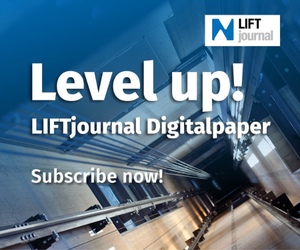
Write a comment